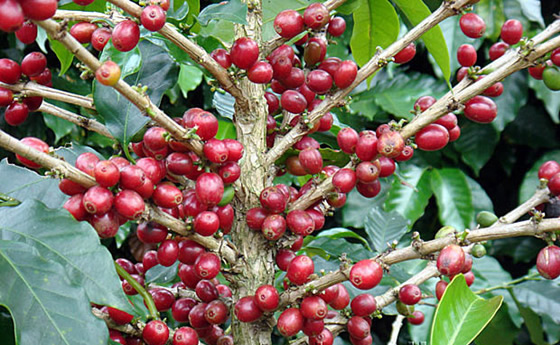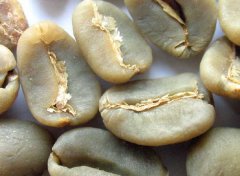Coffee flavor description coffee flavor wheel
In daily life, the word flavor is more often used in taste and taste, that is, the English word flavor.
The so-called taste is essentially a sensory organ, specifically the trigeminal nerve on the tongue, mouth and throat, which responds to the stimulation of compounds.
Separately speaking, there are six basic flavors, sweet, sour, bitter, salty and fresh. It doesn't spread out here.

But the taste is a kind of gestalt, which is the result of the synthesis of the basic flavors. in the coffee tasting, it is usually described by tonality. For example, in Sichuan cuisine, we have a lot of tonality, such as fish flavor, sweet and sour taste. In coffee, we also use flower flavor, fruit tone and caramel tone to describe the taste.
Americans have done a lot of work in this respect, and have made a good summary and summary of the taste of various coffee species at different roasting stages, as well as the flavor caused by various defects and improper roasting.
The flavor wheel of the Fine Coffee Association of America and the flavor wheel of counter-cultural cafes, which can be made on their own Baidu, are all available in high-definition versions.
Can be compared to learn, can also take a look at the table, this is based on the Western food culture, such as blackcurrant, that is, blackcurrant, is not the common taste of the Chinese, such as apricot flavor, in fact, similar to strawberries, the Chinese prefer to use strawberries, of course, strawberry counter-cultural flavor is collected, which can be regarded as a kind of progress, such as peach, the American boutique coffee association has no income. The counter-culture is over. No one can say that all the two pictures are numbered, it is the crystallization of collective wisdom.
The reason why there is such a difference is the different cultural life, different food regions, different descriptions of the same compound, so coffee tasting, the most important thing is to communicate, say how you feel about this bean, different culture, different experience, different description, so communication can bring a lot of fun, but also let each other know more about the past of ta.
Personally, I don't like to transplant the red wine system to coffee. Grading is only meaningful for raw beans, and the score does not represent the level you drink, because baking and extraction can greatly change the flavor trend. Red wine does not have such a problem. Once bottled, the changes in taste are predictable.
I hope you do not faint, to briefly sum up, flavor is taste, apart from the six basic flavors, there are two meanings, one is that you can smell a realistic counterpart, such as jasmine, such as roasted almonds. Second, there is no comprehensive taste of realistic counterparts, such as sweet and sour, brown sugar chocolate rhyme, tomato soup, citrus taffy and so on.
The above picture is simpler, it can be understood simply that the inner ring is tonal and the outer ring is concrete taste. The flavor wheel is aimed at raw beans, not the real sense of taste. A variety of specific taste tests understand, or in order to make some judgment on the local environment of raw beans, planting and processing, or improve, or find out the differential characteristics of raw beans, and make a jackpot in the market.
But for tasting, the flavor wheel is only for reference, tasting is to drink, do not sip, that is the cool techs needed to test beans. Then the first step is synthesis, describe the comprehensive feeling in your mouth, describe it in your own language, whether it is Boiled Fish with Pickled Cabbage and Chili flavor or Fish Filets in Hot Chili Oil flavor (for example), and then there is a second step, that is, split. At this time, the flavor round comes out. Is this sauerkraut flavor northeast or Sichuan, or Guizhou sauerkraut? if you make a taste wheel for sauerkraut, will the spicy seeds stay on the tip of the tongue, the tongue or the palate? Oh, this is Xinjiang Jiji spicy, no, it is Hebei Jize, it must be Jize!
All right, no more jokes. So to split, is to experience the taste in the mouth, tongue surface changes, and with the change of temperature, flavor changes, generally use the entrance, middle, end rhyme. For example, the fragrance of imported jasmine, the sweetness of black sugar in the middle is obvious, and the final rhyme is like red wine. This is the fun of tasting coffee, not pretending, naturally, sincerity, good health, is the primary premise, more often, I drink a taste, but can not recognize, and the memory in my head does not match, will keep shouting, this taste I have eaten somewhere, just can not remember, this is also a kind of fun of communication!
All roasters are making efforts from raw bean selection, blending proportion and baking methods, looking forward to making their own unique flavor coffee in order to differentiate and compete.
Due to the restrictions on the cultivation, processing, trade and baking of raw beans, the names of coffee flavor products of the older generation, such as Brazil, Mantenin have become less and less representative of flavor names, such as Brazilian tradition, which is famous for its smoothness, baking grain and creamy aroma, but due to the improvement of planting and processing technology, beans can also produce a delicious and floral Brazil, which was unthinkable in the past.
Important Notice :
前街咖啡 FrontStreet Coffee has moved to new addredd:
FrontStreet Coffee Address: 315,Donghua East Road,GuangZhou
Tel:020 38364473
- Prev

Coffee tree species
Coffee species Coffee trees can be divided into two main varieties: Arabica (Arabica) and Robusta (Robusta). There are also some minor species, such as the Liberian species (Liberica) and the Alabasta species (Arabusta), but they are rare on the market. Although Arabica and Roberta are widely cultivated, there are significant differences between them.
- Next

What is the reason for the roasting of coffee beans?
Many coffee friends see a layer of oil on the coffee beans, but some of them are quite dry. Why? Yingyue sycamore will answer for you below. The oil evenly distributed on the surface of coffee beans is actually not oil, but a kind of water-soluble organic matter that looks like oil. Coffee oil itself contains a lot of coffee aroma components, which can be dissolved in water, so the surface of your brewed coffee and
Related
- Beginners will see the "Coffee pull flower" guide!
- What is the difference between ice blog purified milk and ordinary milk coffee?
- Why is the Philippines the largest producer of crops in Liberia?
- For coffee extraction, should the fine powder be retained?
- How does extracted espresso fill pressed powder? How much strength does it take to press the powder?
- How to make jasmine cold extract coffee? Is the jasmine + latte good?
- Will this little toy really make the coffee taste better? How does Lily Drip affect coffee extraction?
- Will the action of slapping the filter cup also affect coffee extraction?
- What's the difference between powder-to-water ratio and powder-to-liquid ratio?
- What is the Ethiopian local species? What does it have to do with Heirloom native species?

